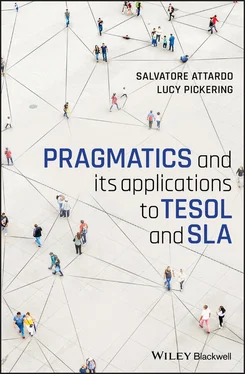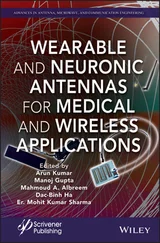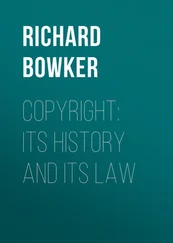More recently, there has been a movement toward using corpora of naturally occurring discourse to identify key language that should be addressed in these kinds of textbook presentations (see, e.g., Simpson & Mendis (2003) study of idioms in academic spoken discourse; and Cheng’s (2010) study of thanking). Jiang (2006) compares the presentation of making suggestions in 6 ESL textbooks with recordings of natural discourse between professors and students and in student study groups. A key finding was that let’s X? was by far the most commonly used phrase to make suggestions in the naturally occurring data yet the form appeared in only one of the textbook series that she examined. She notes that “the limited selection of certain structures, and not others, is not well supported by real-life language use, as reflected in the corpus materials” (p. 51).
A second approach to establishing contextualized examples that can be used to create more appropriate materials is classroom- or institution-based research. E-politeness or e-etiquette has become a growing area of research particularly in academic contexts. Economidou-Kogetsidis (2011) examined NNS email requests sent over several semesters in English at an English-medium university in Cyprus. She collected 200 e-requests from students sent to 11 professors at the institution; these were then judged by NS lecturers from universities in the United Kingdom. Overall, the strategies used by students failed to “observe [expected] deference principles and tend to assume compliance on the part of the addressee” (p. 14). This was at least in part because a popular strategy in the requests was a please + imperative structure (e.g., please answer me as soon as possible ), which instructors felt sounded like an order or a demand. There was also a lack of sufficient mitigation (e.g., I was wondering if ) and often a lack of an opening/closing salutation, both of which irritated many of the instructors. A study like this contains a great deal of information that can be used to create more nuanced pedagogical materials that can respond directly to the perceived pragmatic failures typical in this specific context.
In a similar study, Cheng (2017) investigated instructors’ perceptions of both online and spoken apologies given by both NS and NNS university students. Overall, NS apologies were rated more highly than those by NNSs, and Cheng includes examples of both highly rated and poorly rated student apologies, which is extremely useful for building pedagogical materials. For example, the qualities of the highly rated email apology in example (19) (e.g., willingness to take responsibility, acknowledgment of the importance of the instructor’s time, careful presentation, and opening/closing salutations) can be directly contrasted with their absence in the poorly rated apology shown in example (20):
(19) Hello Dr. Smith, I am so sorry about missing our appointment earlier. I would still like to talk to you about this matter but I understand if you do not wish to schedule another appointment. I will stop by your office during your office hours. Again, I apologize for missing our appointment. Thank you for your time, Mary. (p. 15)
(20) Hi Mr. Smith how are you? hope you have a nice day. i really email you because i have missed an important lecture and as you know the next two weeks we will start the final exams. i seen all my friends and nobody was taking notes or anything else. Would you mind repeat the lecture again or give me a brief summary for the lecture. Because I really need it as soon as possible to study it for the exam. (p. 17)
Cheng discusses a number of pedagogical strategies that could be used to address these issues in ESL classes including both explicit and implicit instructional techniques and provides an excellent list of basic concerns that teachers can discuss with students when focusing on this high stakes area of pragmatic instruction (see Cheng, 2017, p. 21).
3.3.2 Sample Teaching Materials
In this final section, we look briefly at two sample lessons that can be used as models for a variety of speech acts. The first is a suggested lesson plan to address ICs from Boxer and Pickering (1995, pp. 52–55) and follows a presentation to practice model.
Lesson Plan 1: IC Lesson Plan
1 Present and discuss typical IC sequences taken from natural discourse. These can be as short as a routine that might occur in a supermarket check-out:A: I feel like I’ve been standing here forever.B: They never seem to have more than about two registers open and they have about 20!Discuss the three most likely responses to ICs: Agreement, reassurance, or commiseration.
2 Present examples of ICs without responses and ask students to discuss possible responses, for example, “Boy, this line is so slow!”(p. 54)
3 Present examples of IC responses and discuss with students what might have prompted them, for example, “Female friends at home discussing adolescent children: ‘They’re so difficult, these issues!”’(p. 54)
4 Present short conversations that focus on an IC in a jigsaw exercise that students have to arrange in the correct order to be followed.
5 Practice and feedback: Provide roleplay situations that students can perform on videotape (e.g., “A female receptionist at the dentist’s office complains to a male patient about how they are tearing down all the historical buildings in the neighborhood” (p. 55)) and then playback and discuss appropriateness of responses.
The second is from an excellent resource for teachers, Tatsuki and Houck (2010) Pragmatics: Teaching Speech Acts from the TESOL Classroom Practice Series published by TESOL Press. This volume contains ideas for teaching multiple speech acts. Houck and Fujimori focus on advice-giving also using a presentation to practice model.
Lesson Plan 2: Advice-Giving Lesson Plan
1 Use a diagnostic worksheet to determine students’ current advice-giving strategies. For example, you are walking down the street and meet Mr. Suzuki, your principal. You talk for a minute or two. He looks very sick. What would you say? (p. 97)
2 Use examples to present three advice-giving strategies: direct ( you should ), softened ( you might want ), and indirect (no modal) and practice understanding using prerecorded dialogues.
3 Provide controlled practice activities such as responding to short scenarios (e.g., a five-day holiday is coming up. Your oral communication teacher, who recently moved to the area, is planning to drive to a vacation spot. You know the highways will be very crowded (p. 101)).
4 Practice using open-ended roleplays in which students can practice the speech act and provide feedback (p. 94).
1 1. There is a little irony here, namely that Wittgenstein was a Cambridge philosopher and apparently Austin did not like his work and claimed not to have been influenced by it (see Searle, 2007). Nonetheless, the similarities are significant, but are probably due to the general cultural context, what the Germans would call the Zeitgeist , the “spirit of the times.”
2 2. Suppose that Attardo asked Pickering today if she’ll marry him; the question would be non-felicitous, because they are already married and by cultural and legal convention you cannot remarry the same person if you are currently married to them.
3 3. The alert reader will notice that there are some differences between this list and the one from 1969. The reasons for the differences are technical and are discussed in Searle (1979). The Searle1969 list is not meant to be exhaustive and is a list of illocutionary forces; the Searle1979 list is a list of speech acts and is meant as a list of “basic categories” (p. 12) of speech acts.
Читать дальше












